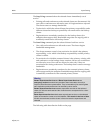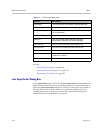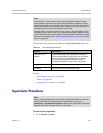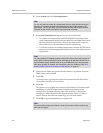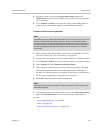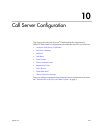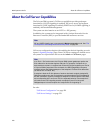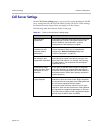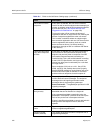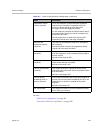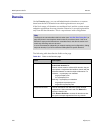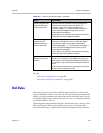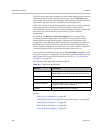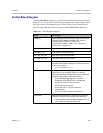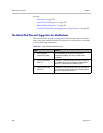
Call Server Settings Call Server Configuration
Polycom, Inc. 221
Call Server Settings
On the Call Server Settings page, you can specify certain gatekeeper and SIP
proxy settings used by the Polycom DMA system Call Server. These settings
are shared across the supercluster and apply to all the clusters.
The following table describes the fields on the page.
Table 10-1 Fields on the Call Server Settings page
Field Description
Allow site-less
registrations
If this option is selected, endpoints that don’t belong to a
configured site or territory can register with the Call
Server. Otherwise, only endpoints in a subnet
configured in the site topology can register.
Accept H.323 neighbor
requests only from
specified external
gatekeepers
If this option is selected, the Call Server accepts H.323
location requests (LRQs) only from gatekeepers
configured on External Gatekeeper page (see
“External Gatekeeper” on page 91).
Resolve H.323 Email-ID
dial strings to other
registered H.323 aliases
If this option is selected, the Call Server resolves email
ID dial strings to another local alias by using the user
part of the email address. For example, the dial string
1234@mycompany.com
would resolve to the endpoint
registered as
1234
.
Automatically assign
enterprise users’ email
addresses as H.323
email IDs
If this option is selected and the system is integrated
with Active Directory, an endpoint associated with an
enterprise user is assigned the user’s email address (if
that address hasn’t already been explicitly assigned to
another endpoint).
Allow calls to/from
rogue endpoints
If this option is selected, the Call Server permits rogue
endpoints to place and receive calls. Rogue endpoints
are endpoints in sites managed by the DMA system that
are not actively registered with the system.
Turning this option off blocks calls from and to rogue
endpoints. Such calls are blocked even if the endpoints
are registered to a neighbored gatekeeper or SIP peer.
This option has no effect on other unregistered network
devices (such as MCUs, GKs, and SBCs).



